Latest in a series of snapshots from Techno’s twilight zone of EPs/12″s and LPs, with notes in the margin.
First up, German newbies, Natch, tell us Audiolouis & Synthek’s Unwise is ‘like a precious gathering of different approaches to Techno, made in order to create a meaningful and elaborate piece of work.’ In fact, opener “Miasma” and the subsequent “Intro:section” point to an interest in atmospherics that’s sustained throughout; but, though the press blah insists that ‘overwhelming soundscapes never abandon the ears’ in what is ‘a bold sequence of powerful tracks devotedly written for the dancefloor,’ its ‘standing as a tribute to the author’s primary inspirations’ is more evident than any compelling individual voice. An extensive remix series is promised including Neel, Tadeo, Ness,Polar Inertia, Sleeparchive, and Zadig—which is nice… Newly sprung from parent, Natch, is Midgar, which ‘aims to bring innovative features into modern techno, and to deliver a new and meaningful sound loaded with positive energy.’ Leaving trends behind—it says here—Midgar has ‘a wide range of interests spanning from Deep Techno to Ambient and Downtempo.’ Wata Igarashi inaugurates the enterprise with Junctions, a diverse EP comprising four tracks exploring deep techno and house—a restless concoction of halfway beats, a pulsating noise backdrop and sound experimentation ranging between machine stuttering techno and dusty acid-tinged house.
Belgium’s Token has shown distinct signs of enhanced quality control lately, further cemented by Tech-veteran (his discog dates back to 1996 since when he’s put out 100+ records) Inigo Kennedy’s Vaudeville. Not especially theatrical, but definitely drama-laden in the pulsing mechanics and cold droney harmonics of its Warp-ed ambient techno update. A glacial beatless overture leads to further atmo-painting, shrouding the ominous “Birth” with crepuscular ambient swathes. What follows, though, is more aligned with the kind of ultra-polished muscle-flexing techno expected— densely layered mournful organ chords drape themselves across percolating pulses, passages of wavering soft-synth spool out over digital reverb clouds. “Aleph” jackboots through a swirling hall of melodic mirrors, while the doleful symphono-electro of “ngc5128” recalls something of the spirit of Incunabula-period Autechre. Fashioned with meticulous attention to detail, the likes of “Lullaby,” and “Vallecula” are exhibits of how far Techno can go while still being itself.
Next up is a DEMENT3D debut for drone/ambient/experimental project, Ligovskoï, whose tracks have apparently frequently featured in DEMENT3D heads’ DJ sets. Dilip EP and Remixes is a double-EP of the duo’s beatless ambience, with In Aeternam Vale, Abdulla Rashim (hello, again), label co-founders, Francois X and Heartbeat, together with Parisian pals, Antigone and Voiski executing more technoid takes on Ligovskoï’s textures, Antigone & Francois X’s being a particularly pleasing piece of cerebral post-acid-trance (n.b. the EP is checked by The Quietus too). Antigone figures again on newbie Parisian label, Taapion’s Various Artists EP, together with PVNV, Roman Poncet, Shlømo & AWB, which hosts ‘Sensible techno with refined layers of sounds and powerful percussion on a foundation of solid sub bass…’ (pssst, I think he means ‘sensitive’ (Ed.)), all these young artists, apparently, part of a new French Techno movement, several ‘just emerging from the dark basements of Paris’ (of course, light lofts wouldn’t cut it). Antigone ‘brings a cosmic trip into the deepness of a percussive Techno. Lead by a sensible atmosphere made with pads, the track gives a religious aspect to a timeless journey.’ (amen, brother!) Poncet’s track ‘brings the effective part of Techno on this EP, modern, powerful, made for hitting the crowd.’ (ouch!) and newcomer PVNV ‘share a mind-blowing adventure though rigid rhythmic structures, drived and primal breaths, illuminates bleeps and soft layers.’ (yawn…), while Shlømo & AWB bring ‘a lightning waterfall of reverbed elements crossing a powerful combination between sub bass and drums…’ (and mixed metaphors!).
For a proper pose on the Techno Darkside you need you to be something less frivolous than simply a DJ with some nifty gear via the Bank of Mum and Dad these days. Case in point, Imago, purports to be rather ‘a vision, the figurative representation of a visceral innate human need. The motion, the journey, the transformation, the dream. Imago’s music projects images and auditory worlds related to dreams, where in a single stream, multiple dimensions coexist.’ (Oh, aye?) From this rhetorical highpoint, with a certain bathos, these newbies plummet from would-be poesis to prosaic blah in trailing their EP, Nocturne: ‘The Imago’s sound dominant key is the Underground Dub Techno, powerful straddling rhythms which are moving stubborn, chased by underhand and acid sequences, yet surrounded by a timbral wide panorama seemingly chancy and hostile. In this scenario, many different musical being hide themselves living on the edge.’ Phew! Who are these intrepid souls? Three amici from Rome, described as ‘the European capital city of Techno in the early 90s’—no hype there—performing in ‘a strongly old school matrix’ with analog instruments tweaked with ‘self-developed sound control and generation software.’ Trivmvirate is clearly no mere label, more a credo with a goal beyond ‘to persue the research in the field of electronic dance music, with of hystorical purpouse, time/space bending and unconventional means of communication. All affiliates undertake a formal training in order to achieve higher knowledge in space-ship crafting and inner exploration, highly demanded abilities required to space cadets.’ (sic) Your reviewer feels almost not worthy in the face of this queasy mix of old school and post-industrial Techno and gothic dark ambient run through with clubfoot grooves, gruzzy textures and hooded stares across a dank ‘floor.
Good to find enigmatic Sandwell District affiliate Rrose still spooling icy polyrhythms, acidic modulated reflections, and hallucinatory waves–most recently through Eating the Other on his own Eaux. “Pentagons” starts a set of deep-focused voodoo/voidoid techno crisp and dry then signature tiered arpeggios in slow-build stratification, seeping deep with brooding, viscous modulations,a dark impish spirit, and pummelling bass thrum. “Ammonia” pulses with descending triplets building multi-dimensionally, while the extended “Mirror” takes a fizzing minimal techno jack to acid peaks and a droning coda, a controlled pile-up of mutating synth.
Meanwhile there’s definitely something in the water in Sweden (see here). Following Abdulla Rashim’s impressive debut LP, there’s more nifty Northern Electronics in the form of Acronym’s Nautilus to intoxicate. But it’s kindred label, Hypnus, that’s come to our attention lately with some quality deep techno, such as the recent Geonosis by Rome’s Luigi Tozzi aka Tozzy. Things get quirkier with Mayfield, which finds Modvs seeking to capture the atmosphere experienced in a forgotten city space, namely Manchester’s Mayfield Train Station, ‘…abandoned and frozen in time. […] unsafe, poorly lit and access is nearly impossible. Inside lies vast dark rooms, decaying platforms and crumbling brick walls.’ The EP ‘showcases the contrasting feelings one can experience when delving further into the darkness,’ with original tracks reworked by, among others, questing fellow-Swede, Korridor. Hypnus head honcho, Ntogn, has Spanish imprint, Subsist, release his Grimoire: Demons & Sorcery album, accompanied by a bit of a Dionysian manifesto: ‘For 40,000 years, man has performed sacred rituals in order to commune with the ruling forces of life and motion. In pace with rapid beats and under the influence of entheogenic sacraments, we have been dancing and raving in the smoke of sacred fires in order to travel inwards to the undergrounds of bordering dimensions and beyond to the distant fringe of the universe. Ntogn (enteogen) wants to embody these holy flames and visionary clouds of smoke. To act as a sonic magician, not only fusing the five elements of the pentagram with spells evoked in swirling, dark and psychedelic techno rituals, but also to create a mythological and occult narrative.’ Well, I guess it beats ‘put your hands in the air like you just don’t care’…
Stroboscopic Artefacts has been pushing the more abstract envelope for the past few years with their spin-off, Monad. The latest in the series comes from Eomac, Dublin-based Ian McDonnell—a half of Lakker, who authored last year’s Monad XIV (see also full SA debut, Untitled EP). His Monad XVII hosts four exhibits of tribal-ish noise-spatter, broken sound and rhythmic skitter (n.b. see debut album, Spectre). Peter Van Hoesen and Yves De Mey‘s Sendai project follows with their Monad XVIII. True to the Monadic vision of sound experiment, “Isobaric 3” is thick with atmosphere, crammed with reverberant percussion, sculpted with intelligent design—immersive futuristic mind-body techno in the SA in-house style, and while “Directive” engages for 12+ minutes with twists, turns and intricate layers of sound, the most obvious directive comes in “Martens’ Deficit,” with more locked in drums pumping below bright synths and a hyper-high-end.
Most recent emission from headf**k practitioners, Prologue, is from Cassegrain, trailing a debut album in Autumn on which the Berlin-based pair quest further into neo-primitivist percussion and post-acidic inquiries. The Blood Distributed as Pure Colour EP is designed to act as a sound manifesto of their ongoing explorations: ‘When you close your eyes and stare into nothingness, that private virtual space, what does your brain see? Shimmering cells dancing in the void, clouds in your consciousness, the particle elements of a distant past – blood distributed as pure colour.’ Once more, then, we’re invited ‘to spark a connection with the ancients lying dormant within,…exploring a fine potions of voodoo acids and hypnotic extra-sensory sonics, we are transported to places far and exotic.’ (I’ll get me coat!) From a similar sector of the techno-sphere albeit Italian-engineered comes Attic Music with the first in a new series, Almost There 1, ‘the second wave of the new Attic phase’ (first came the Antimatter trilogy) ‘…a trip starting from dark-ambient and experimental techno through new, forward-looking soundscapes.’ Padova’s Mace., who has previous form on Further and Eclipse, presents ‘a new crepuscular slow-tempo masterpiece,’ (modestamente!) backed by a nicely spooked remix banger from Attic capo, Fabrizio Lapiana, mastered by one of the Voices from the Lake, Neel.
And finally cerebral muscularist Tuomas Rantanen is let loose by Brighton’s City Wall on a ‘meditative reflection on the auditory world of a prehistoric time.’ All behemoth beats and triceratops textures, Early Triassic finds the Finn giving free rein to a sound previously patented on other EPs, though this full-length is less tied to generic bpm and 4/4 imperatives in what we’re invited to view as his interpretation of the relative absence of order and impermanence in early life forms as compared with ‘today’s homogenised and industrialised world.’ Big bass prods and rugged rhythms flirt with industrial and dally with Dubstep, deploying some of the more primitive synthetic forms like square waves and sine waves, hitched to a deal of time-stretch and bit-crush ‘to help emulate a time when life was indeed more raw and simplistic.’
Latest albient mix, Dalliance #8, features some of these artists and releases.






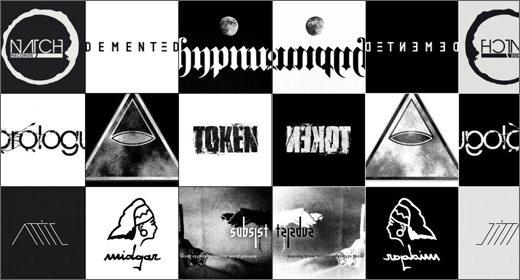



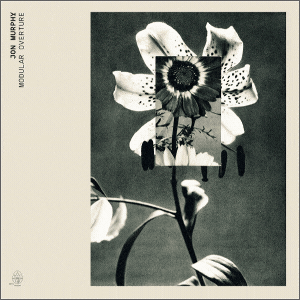
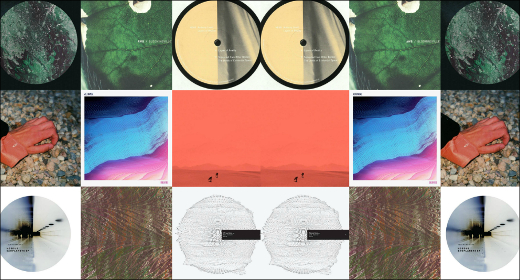
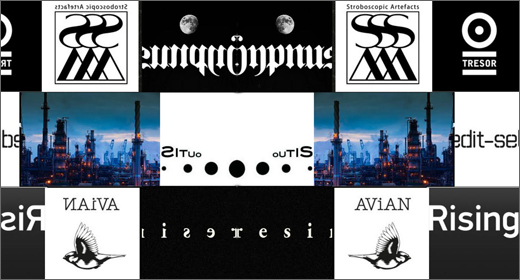
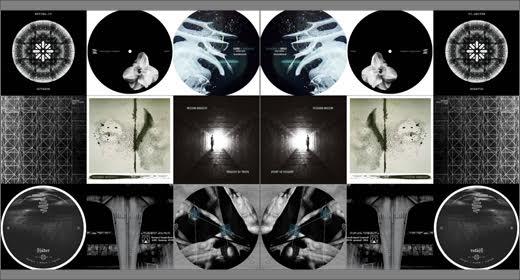
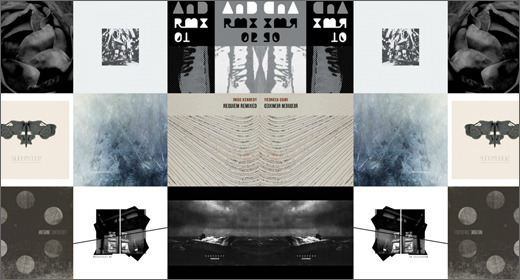


![Romanowitch :: A critical season substitute (glitch.cool) — [concise]](https://igloomag.com/wp/wp-content/uploads/2025/03/romanowitch-a-critical-season-substitute_tape_feat-75x75.jpg)








